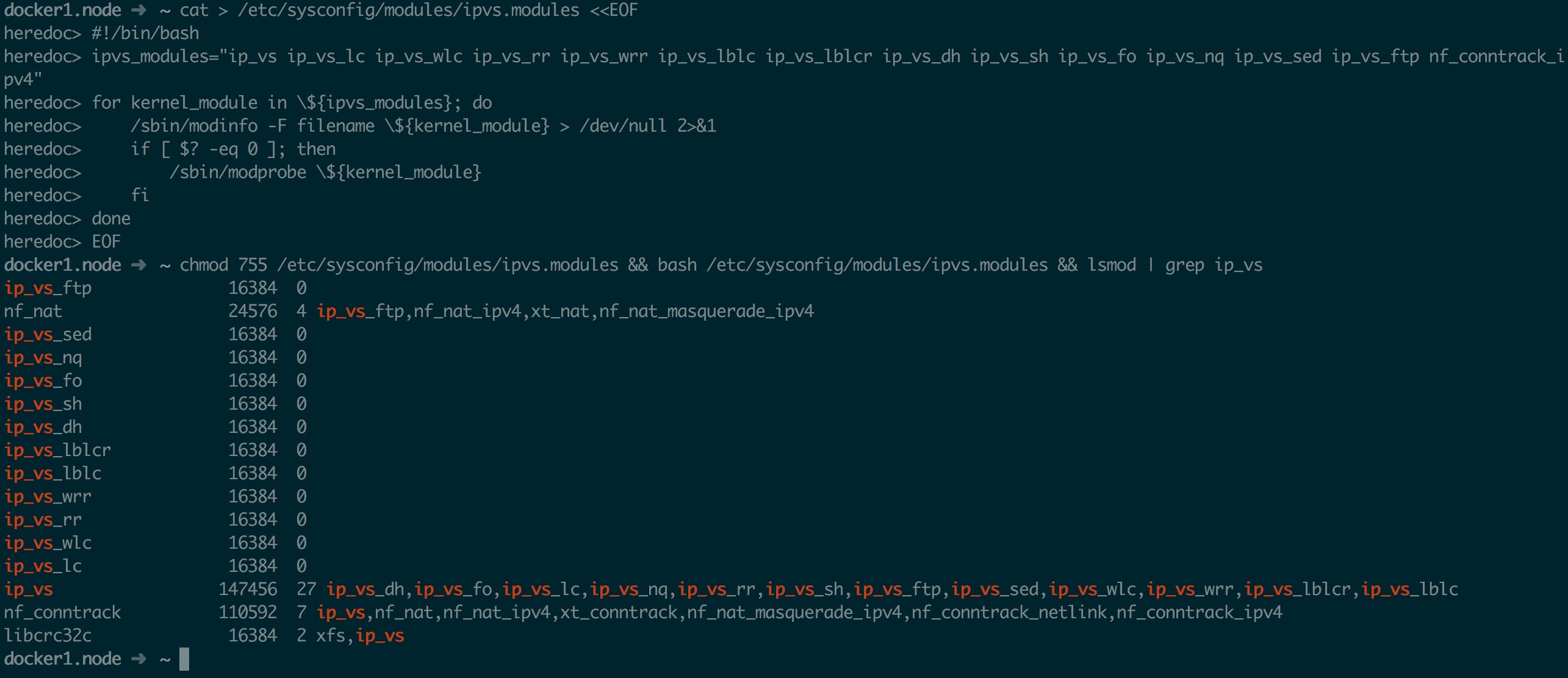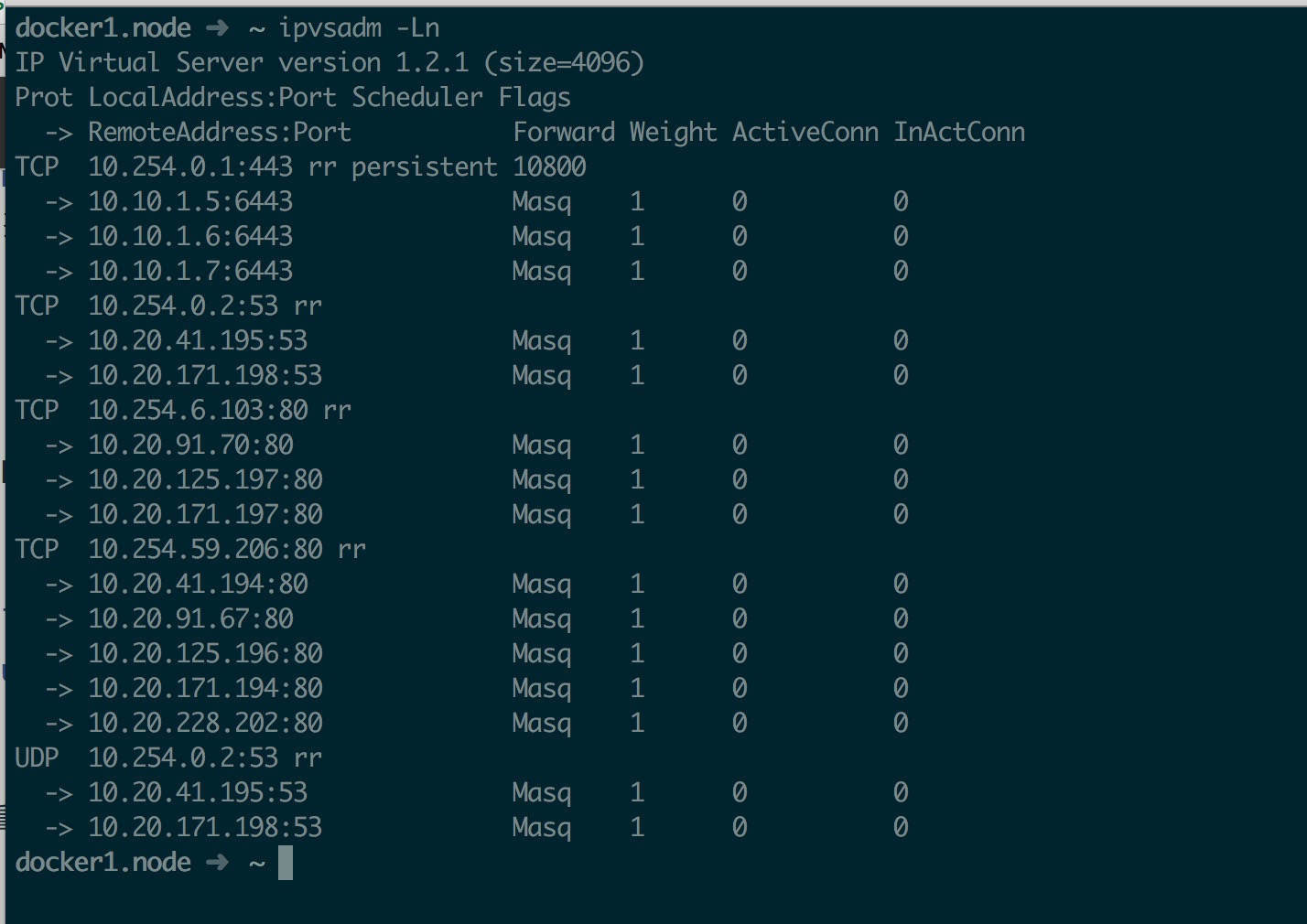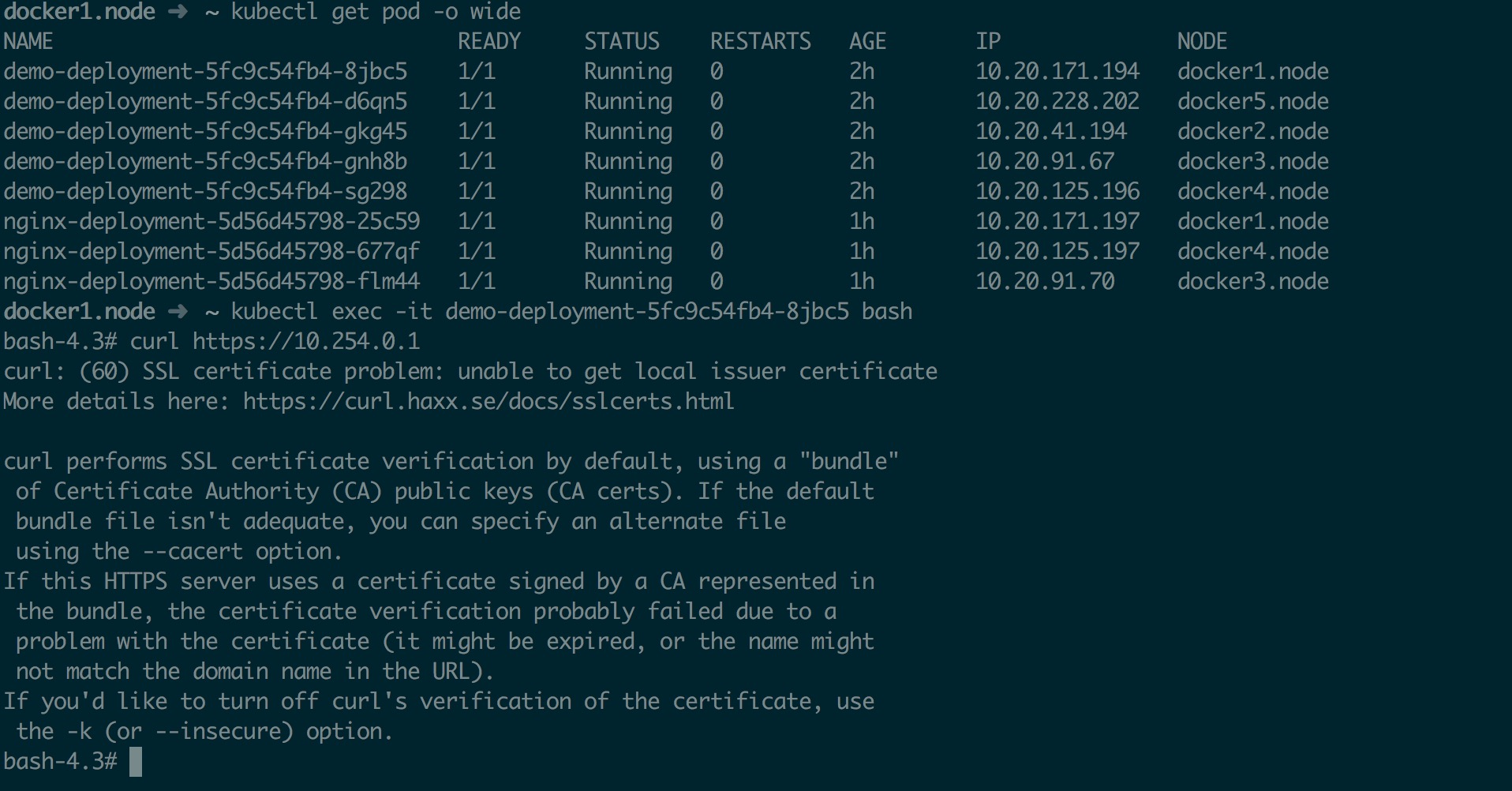Kubernetes 1.8 kube-proxy 开启 ipvs
Kubernetes 1.8 发布已经好几天,1.8 对于 kube-proxy 组件增加了 ipvs 支持,以下记录一下 kube-proxy ipvs 开启教程
一、环境准备
目前测试为 5 台虚拟机,CentOS 系统,etcd、kubernetes 全部采用 rpm 安装,使用 systemd 来做管理,网络组件采用 calico,Master 实现了 HA;基本环境如下
| IP | 组件 |
|---|---|
| 10.10.1.5 | Master、Node、etcd |
| 10.10.1.6 | Master、Node、etcd |
| 10.10.1.7 | Master、Node、etcd |
| 10.10.1.8 | Node |
| 10.10.1.9 | Node |
二、注意事项
之所以把这个单独写一个标题是因为坑有点多,为了避免下面出现问题,先说一下注意事项:
2.1、SELinux
如果对 SELinux 玩的不溜的朋友,我建议先关闭 SELinux,关闭方法如下
1 | |
然后重启机器并验证
1 | |
2.2、Firewall
搭建时尽量关闭防火墙,如果你玩的很溜,那么请在测试没问题后再开启防火墙
1 | |
2.3、内核参数调整
确保内核已经开启如下参数,或者说确保 /etc/sysctl.conf 有如下配置
1 | |
然后执行 sysctl -p 使之生效
1 | |
2.4、内核模块加载
由于 ipvs 已经加入到内核主干,所以需要内核模块支持,请确保内核已经加载了相应模块;如不确定,执行以下脚本,以确保内核加载相应模块,否则会出现 failed to load kernel modules: [ip_vs_rr ip_vs_sh ip_vs_wrr] 错误
1 | |
执行后应该如下图所示,如果 lsmod | grep ip_vs 并未出现 ip_vs_rr 等模块;那么请更换内核(一般不会,2.6 以后 ipvs 好像已经就合并进主干了)

三、开启 ipvs 支持
3.1、修改配置
修改 /etc/kubernetes/proxy 配置如下
1 | |
启用 ipvs 后与 1.7 版本的配置差异如下:
- 增加
--feature-gates=SupportIPVSProxyMode=true选项,用于告诉 kube-proxy 开启 ipvs 支持,因为目前 ipvs 并未稳定 - 增加
ipvs-min-sync-period、--ipvs-sync-period、--ipvs-scheduler三个参数用于调整 ipvs,具体参数值请自行查阅 ipvs 文档 - 增加
--masquerade-all选项,以确保反向流量通过
重点说一下 --masquerade-all 选项: kube-proxy ipvs 是基于 NAT 实现的,当创建一个 service 后,kubernetes 会在每个节点上创建一个网卡,同时帮你将 Service IP(VIP) 绑定上,此时相当于每个 Node 都是一个 ds,而其他任何 Node 上的 Pod,甚至是宿主机服务(比如 kube-apiserver 的 6443)都可能成为 rs;按照正常的 lvs nat 模型,所有 rs 应该将 ds 设置成为默认网关,以便数据包在返回时能被 ds 正确修改;在 kubernetes 将 vip 设置到每个 Node 后,默认路由显然不可行,所以要设置 --masquerade-all 选项,以便反向数据包能通过
以上描述可能并不精准,具体请看 Google 文档
3.2、测试 ipvs
修改完成后,重启 kube-proxy 使其生效
1 | |
重启后日志中应该能看到如下输出,不应该有其他提示 ipvs 的错误信息出现

同时使用 ipvsadm 命令应该能看到相应的 service 的 ipvs 规则(ipvsadm 自己安装一下)

然后进入 Pod 测试

最后说一点: ipvs 尚未稳定,请慎用;而且 --masquerade-all 选项与 Calico 安全策略控制不兼容,请酌情考虑使用(Calico 在做网络策略限制的时候要求不能开启此选项)